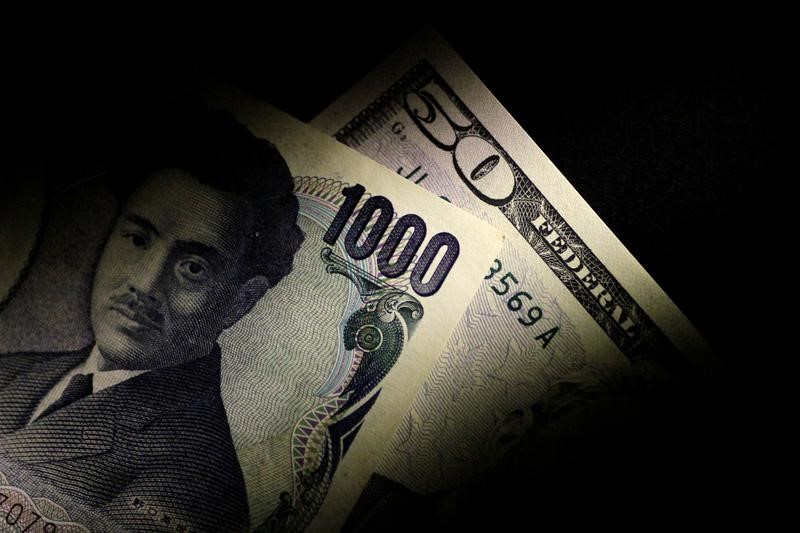
At 04:45 ET (08:45 GMT), the Dollar Index, which tracks the greenback against a basket of six other currencies, traded 0.2% lower at 105.630, having climbed to 106.00 on Thursday.
The dollar has edged lower at the start of the new week, but was still stilling on strong gains of over 1% so far in April as traders have largely priced out most expectations of early rate cuts by the Fed.
Friday’s PCE price index data, the Fed’s preferred inflation gauge, came in hotter than expected for March, pointing to rate cuts coming much later in the year than had been expected at the start of 2024.
The focus this week is now squarely on a Fed meeting, which concludes on Wednesday. The central bank is expected to keep rates steady and potentially offer a hawkish outlook, given recent stickiness in U.S. inflation.
“PCE figures have confirmed that inflation remains too hot, and last month’s very strong jobs figures are likely to prompt a more cautious tone by Chair Jerome Powell on the prospect of rate cuts,” said analysts at ING, in a note.
The Fed meeting comes ahead of Friday’s monthly jobs report, which will give a fresh look at the strength of the U.S. labor market.
Economists expect the economy to have added 243,000 jobs in April, moderating from 303,000 in March, while the unemployment rate is expected to remain steady at 3.8%.
Most of the action in the foreign exchange market has been seen In Asia Monday, with USD/JPY slumping 1.8% to 155.56 after earlier climbing as high as 160.245.
The sharp nature of the move has led many to look to the authorities for intervention, although Japan’s top currency diplomat Masato Kanda declined to comment when asked if authorities had intervened.
Forex markets have been on edge for weeks for any signs of action from Tokyo to prop up a currency that has plunged to 34-year lows against the dollar even though the central bank exited from negative interest rates last month.
“While not yet official, there are strong indications that Japan intervened in the FX market this morning after USD/JPY touched 160.0,” ING added. “If we follow the same script as 22 September 2022, USD/JPY should remain volatile throughout the session before stabilising around 156-157.”
In Europe, EUR/USD rose 0.3% to 1.0722, benefiting from the dollar’s weaker tone, while traders digested a series of European inflation releases.
Spanish consumer prices rose 3.3% on the year in April, a monthly increase of 0.7%, slightly below expectations.
A number of German states also released their April consumer figures, with the most populous state, North Rhine Westphalia, releasing numbers that remained slightly above the European Central Bank’s 2/0% medium-term target.
The ECB is planning to cut interest rates in June but the outlook further out remains clouded by rising energy costs, stubbornly high services inflation and continued geopolitical tensions.
GBP/USD rose 0.3% to 1.2528, benefiting from the recent dollar weakness.
“The recent rollercoaster in BoE policy comments and a substantial repricing higher in U.S. rates have left the Sonia curve attached to the prospect of an August rate cut, but also signal market reluctance to price in additional cuts,” ING added.
Elsewhere, USD/CNY traded largely flat at 7.2462, while AUD/USD rose 0.4% to 0.6558, on speculation that a hotter-than-expected first-quarter inflation reading will attract more interest rate hikes from the Reserve Bank of Australia.
To read the full article, Click Here
